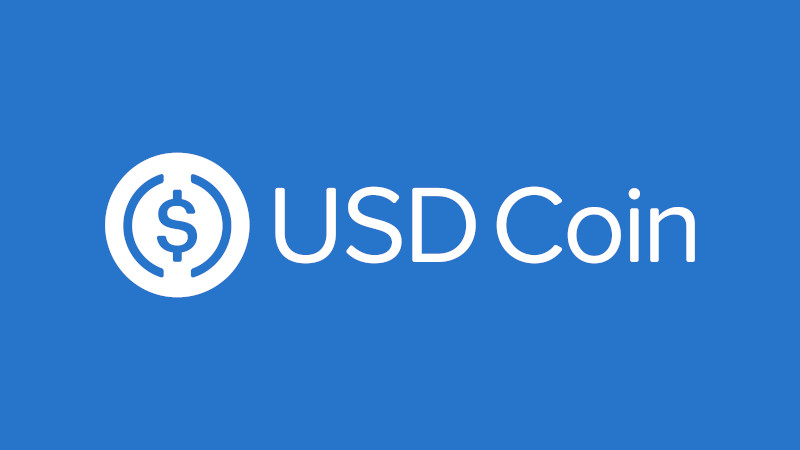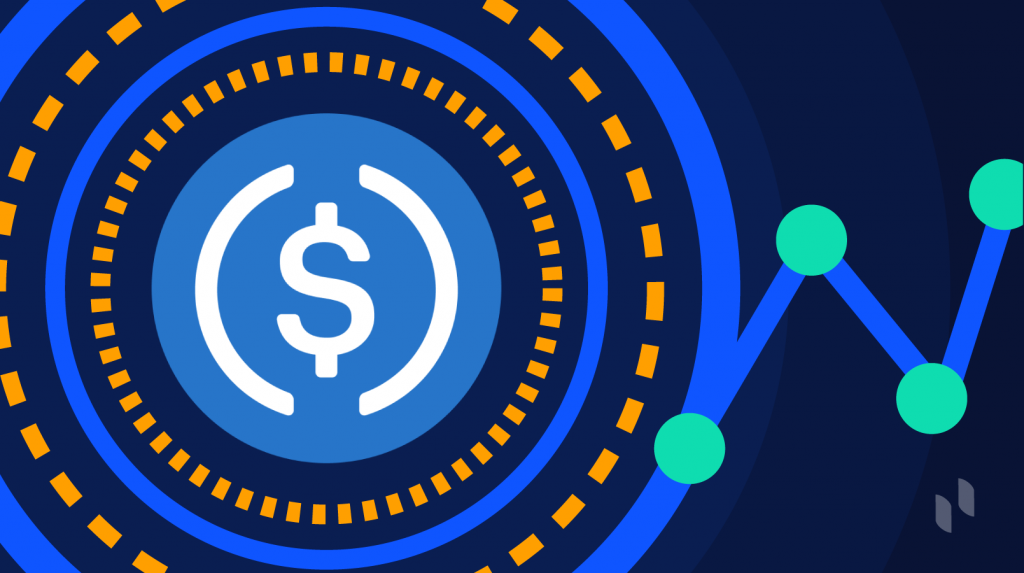USDC, or USD Coin, is a cryptocurrency that is specifically designed to maintain a stable value by being tied to the U.S. dollar. As a stablecoin, it provides a reliable digital asset that can be used for various transactions without the volatility typically associated with cryptocurrencies.
How does USDC work?
USDC works by being pegged to the U.S. dollar at a one-to-one ratio. This means that for every USDC token in circulation, there is an equivalent amount of U.S. dollars held in reserve. The goal is to provide users with a digital currency that maintains a stable value comparable to fiat currencies.
Launch and Consortium
USDC was launched in 2018 by Centre, a consortium founded by two prominent cryptocurrency companies, Circle and Coinbase. The consortium’s aim was to create a stablecoin that would be widely adopted and trusted within the cryptocurrency community.
Stablecoin Definition
A stablecoin is a type of cryptocurrency that is designed to have a stable value, usually by being pegged to a specific fiat currency or a basket of assets. The stability of stablecoins is achieved through various mechanisms, such as collateralization or algorithmic stability mechanisms.
Value and Stability
One-to-One Peg with USD
The value of USDC is maintained through a one-to-one peg with the U.S. dollar. For every USDC token in circulation, there is an equivalent amount of U.S. dollars held in reserve. This ensures that the value of USDC remains stable and predictable, making it a reliable digital asset for users.
Backing with Cash and Bonds
To ensure the stability and value of USDC, it is backed by a combination of cash and short-term U.S. government bonds. These assets provide a solid foundation for USDC’s value and help maintain its stability even during periods of market volatility.
Minting and Burning Tokens
When users buy USDC, new tokens are minted, and when they sell USDC, the tokens are “burned.” This mechanism helps regulate the supply of USDC in circulation and ensures that it remains in line with the corresponding amount of U.S. dollars held in reserve. This process contributes to the stability of USDC’s value.
Divisibility
USDC is divisible, which means that users have the ability to hold fractions of a token. This divisibility allows for more flexibility and precision when using USDC for transactions, as users can send or receive smaller amounts of USDC to accommodate the specific requirements of a transaction.

Use Cases and Benefits
Purchasing and Storing USDC
One of the primary use cases for USDC is to purchase and store it. Users can easily acquire USDC through exchanges or platforms that support it. By holding USDC, users have access to a stable digital asset that can be used for various purposes, including funding purchases of other cryptocurrencies, as we will discuss in the next section.
Funding Purchases of Other Cryptocurrencies
USDC serves as a convenient gateway for users to purchase other cryptocurrencies. By holding USDC, users can quickly and easily fund their purchases of other digital assets without the need to convert their assets back and forth from fiat currencies. This offers greater speed and efficiency in navigating the cryptocurrency market.
Transparency and Reporting
USDC aims to provide transparency and assurance to its users. The project regularly publishes reports detailing its reserves, providing transparency into the backing assets and their management. Initially, monthly reports were provided, but now USDC offers weekly reports, further enhancing transparency and building trust within the cryptocurrency community.
USDC vs Other Stablecoins
Comparison with Tether (USDT)
USDC differs from Tether (USDT), another widely used stablecoin, in several key ways. While both aim to maintain a one-to-one peg with the U.S. dollar, USDT has faced controversies regarding its reserves and transparency. In contrast, USDC offers greater transparency by providing regular reports of its reserves, helping to build trust and confidence among users.
Comparison with DAI
DAI is a stablecoin that is not directly pegged to a fiat currency but instead maintains its stability through an algorithmic mechanism. Unlike USDC, DAI achieves stability through collateralization with other cryptocurrencies. While DAI may offer more flexibility in terms of its peg and collateralization methods, USDC provides a more direct and familiar connection to the U.S. dollar.
Advantages of USDC
One of the key advantages of USDC is its strong backing and transparency. With its reserves backed by cash and U.S. government bonds, USDC provides a solid foundation for its value. Additionally, the regular reporting of reserves further enhances transparency and helps establish USDC as a trusted stablecoin. The one-to-one peg with the U.S. dollar also offers stability and predictability, making it an attractive option for users.
Regulation and Compliance
Regulatory Environment
USDC operates within the framework of existing regulations concerning digital currencies and financial transactions. As a stablecoin, USDC must comply with relevant laws and regulations to ensure transparency, consumer protection, and financial stability. Compliance with regulatory requirements helps foster greater trust and confidence in USDC.
KYC and AML Requirements
To comply with anti-money laundering (AML) and know your customer (KYC) requirements, USDC requires users to provide identification and follow proper verification processes when using the stablecoin. These measures help prevent illicit activities and ensure compliance with applicable regulations.
Centre’s Approach to Compliance
Centre, the consortium behind USDC, takes a proactive approach to compliance. It works closely with regulators and policymakers to ensure that USDC adheres to applicable laws and regulations. By actively engaging in discussions and collaborations with regulatory bodies, Centre aims to establish USDC as a trusted and compliant stablecoin.
Adoption and Market Presence
Acceptance by Exchanges and Platforms
USDC has gained significant traction and is widely supported by various exchanges and platforms. Its adoption by reputable cryptocurrency exchanges and platforms has helped create a robust market presence, making it easily accessible to users around the world.
Integration with Decentralized Applications
USDC is compatible with decentralized applications (dApps) built on blockchain platforms such as Ethereum. This compatibility expands the use cases of USDC, allowing users to leverage its stability and value within a wide range of decentralized applications.
Expansion into Global Markets
USDC has expanded its market presence beyond the United States and has gained traction in various global markets. Its stability and ease of use make it an attractive option for individuals and businesses in countries with volatile or restrictive fiat currencies. This expansion into global markets further solidifies USDC’s position as a leading stablecoin.

Challenges and Risks
Volatility of Underlying Cryptocurrencies
While USDC itself maintains a stable value, it is important to consider that it operates within the broader cryptocurrency market. The volatility of underlying cryptocurrencies, such as Bitcoin and Ethereum, can indirectly impact the stability and perception of USDC. Users should be aware of the risks associated with the overall cryptocurrency market.
Counterparty Risks
As with any financial asset, there are counterparty risks associated with USDC. These risks arise from the entities responsible for managing and backing USDC, such as the Centre consortium. Users should assess the credibility, reliability, and security measures of the parties involved before engaging with USDC.
Regulatory Uncertainty
The regulatory landscape for cryptocurrencies, including stablecoins like USDC, is still evolving. Changes in regulations or uncertain regulatory environments can pose challenges and risks for stablecoin projects. Users should stay informed about regulatory developments and assess the impact they may have on USDC and its underlying ecosystem.
Market Perception
Perception and trust within the cryptocurrency market can significantly impact the adoption and growth of stablecoins like USDC. Negative sentiment, controversies, or lack of confidence in stablecoin projects can affect their acceptance and hinder market adoption. Transparency, compliance, and effective communication are crucial in building and maintaining a positive market perception.
Future of USDC
Potential Growth and Market Adoption
USDC has demonstrated significant growth and a strong presence in the cryptocurrency market since its launch. Continued adoption by exchanges, platforms, and businesses, coupled with its stable value proposition, positions USDC for potential further growth and market adoption in the future.
Role in the Digital Economy
As cryptocurrencies continue to shape the digital economy, stablecoins like USDC play a crucial role in facilitating transactions and providing stability. Their ability to bridge traditional financial systems with blockchain technology offers new opportunities for individuals and businesses to participate in the global economy in a secure and efficient manner.
Innovation and Upcoming Developments
The future of USDC is likely to involve ongoing innovation and the development of new features and functionalities. As the ecosystem evolves, Centre and other stakeholders are likely to explore advancements such as interoperability with different blockchain networks, scalability improvements, and enhanced integration with decentralized finance (DeFi) applications.
Conclusion
USDC has established itself as a leading stablecoin in the cryptocurrency market, offering stability and reliability to its users. With its one-to-one peg with the U.S. dollar, strong backing, and transparency, USDC provides a convenient digital asset for various use cases. While challenges and risks exist, the future of USDC holds potential for further growth, market adoption, and innovation in the digital economy.
















